In the index to Donald E. Knuth’s The Art of Computer Programming, the entries for Circular definition and Definition, circular point to each other.
Best Efforts
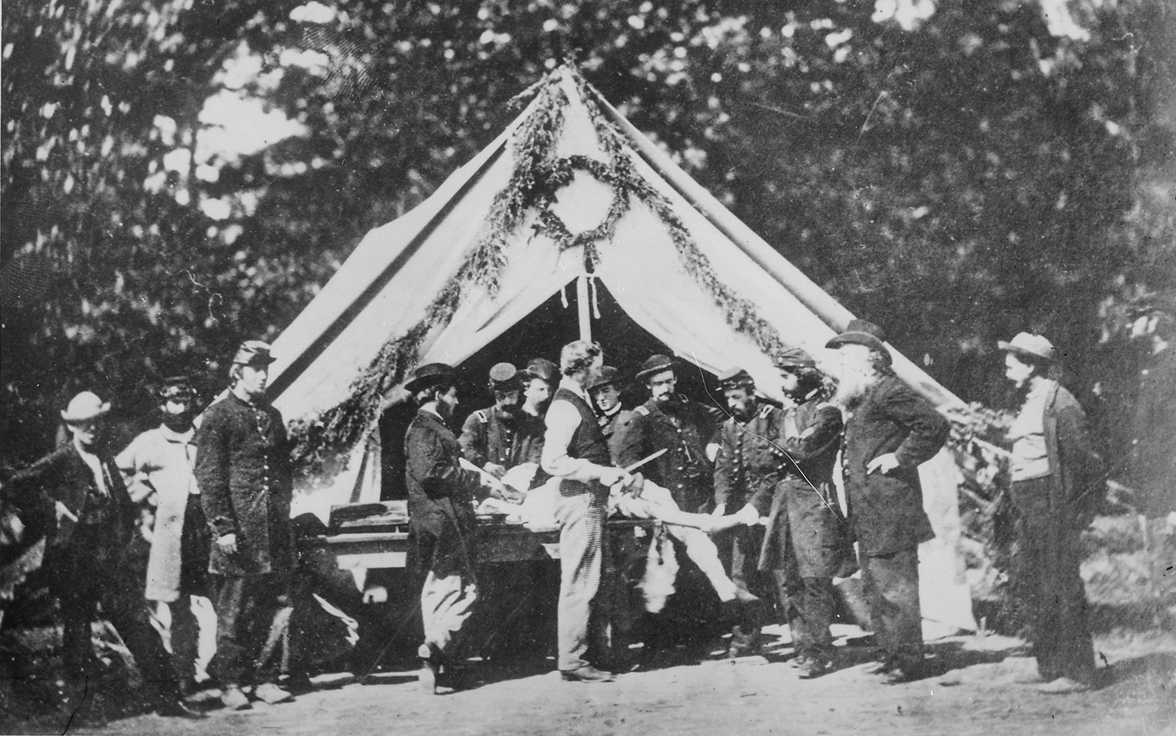
A portrait of a Civil War field hospital in 1863, written by a Union colonel wounded at Port Hudson:
I never wish to see another such time as the 27th of May. The surgeons used a large Cotton Press for the butchering room & when I was carried into the building and looked about I could not help comparing the surgeons to fiends. It was dark & the building lighted partially with candles: all around on the ground lay the wounded men; some of them were shrieking, some cursing & swearing & some praying; in the middle of the room was some 10 or 12 tables just large enough to lay a man on; these were used as dissecting tables & they were covered with blood; near & around the tables stood the surgeons with blood all over them & by the side of the tables was a heap of feet, legs & arms. On one of these tables I was laid & being known as a Col. the Chief Surgeon of the Department was called (Sanger) and he felt of my mouth and then wanted to give me cloriform: this I refused to take & he took a pair of scissors & cut out the pieces of bone in my mouth: then gave me a drink of whiskey & had me laid away.
In 1918, after a half-century of medical advances, one federal surgeon looked back on the war:
We operated in old blood-stained and often pus-stained coats, the veterans of a hundred fights. … We used undisinfected instruments from undisinfected plush-lined cases, and still worse, used marine sponges which had been used in prior pus cases and had been only washed in tap water. If a sponge or an instrument fell on the floor it was washed and squeezed in a basin of tap water and used as if it were clean. Our silk to tie blood vessels was undisinfected. … The silk with which we sewed up all wounds was undisinfected. If there was any difficulty in threading the needle we moistened it with … bacteria-laden saliva, and rolled it between bacteria-infected fingers. We dressed the wounds with clean but undisinfected sheets, shirts, tablecloths, or other old soft linen rescued from the family ragbag. We had no sterilized gauze dressing, no gauze sponges. … We knew nothing about antiseptics and therefore used none.
In The Life of Billy Yank, historian Bell I. Wiley writes, “Little wonder that gangrene, tetanus and other complication were so frequent and that slight wounds often proved mortal.”
Big News
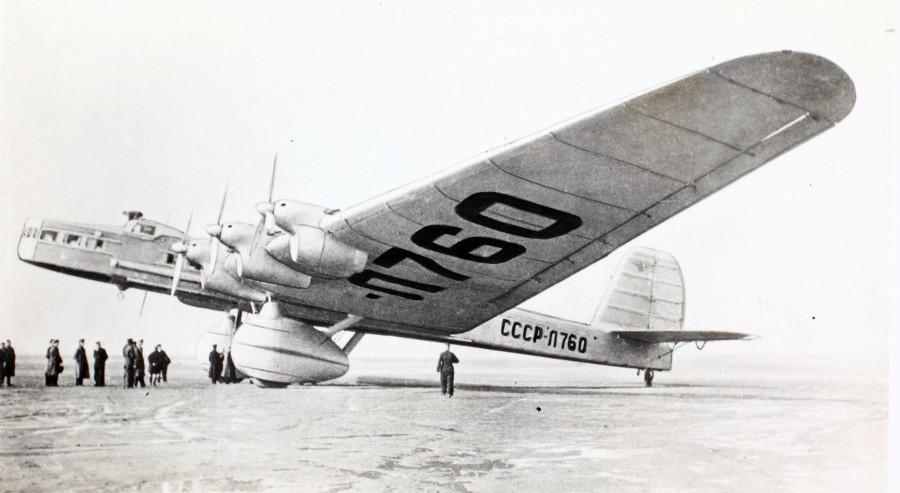
The Soviet Union took propaganda to a ludicrous extreme in the 1930s with the Maksim Gorki, a multimedia communications empire in the sky. With a wingspan of 206 feet and a takeoff weight of 42 tons, it was the largest land aircraft ever built at the time, requiring eight huge 900-horsepower engines to get aloft.
Aboard were a complete printing plant, capable of printing 10,000 copies per hour of an illustrated 12″ x 16″ newspaper, a photographic darkroom, and a high-speed radio apparatus and telegraph. On the ground, a projection room could cast movies onto a folding screen for up to 10,000 spectators through a window in the fuselage.

“The aircraft also contained a cafe, its own internal telephone exchange, and sleeping quarters and toilets,” notes James Gilbert in The World’s Worst Aircraft. “Four auxiliary engines were required to generate the power to run the huge loudspeakers that broadcast the Soviet message down upon the astonished peasants over which the aircraft flew, and at night to power a system of lights along the underside flashing slogans.” Whether anyone wanted to hear all this is another question.
Airborne
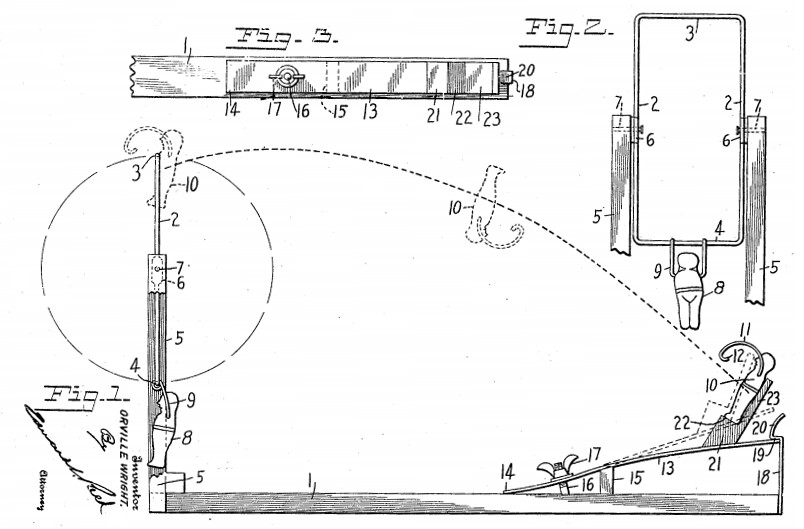
In 1925, 20 years after completing his work on the airplane, Orville Wright patented a spring-propelled doll:
This invention relates to toys and more particularly to that type of toy in which any object, such as a doll, is projected through the air and caused to engage and to be supported by a swinging bar or other suitable supporting structure.
I don’t know the story behind it. Orville was 53 years old. Neither he nor Wilbur had any children, and their sister didn’t marry until the following year.
Perhaps he was tinkering just to tinker. “Isn’t it astonishing,” he once said, “that all these secrets have been preserved for so many years just so we could discover them!”
Extremities
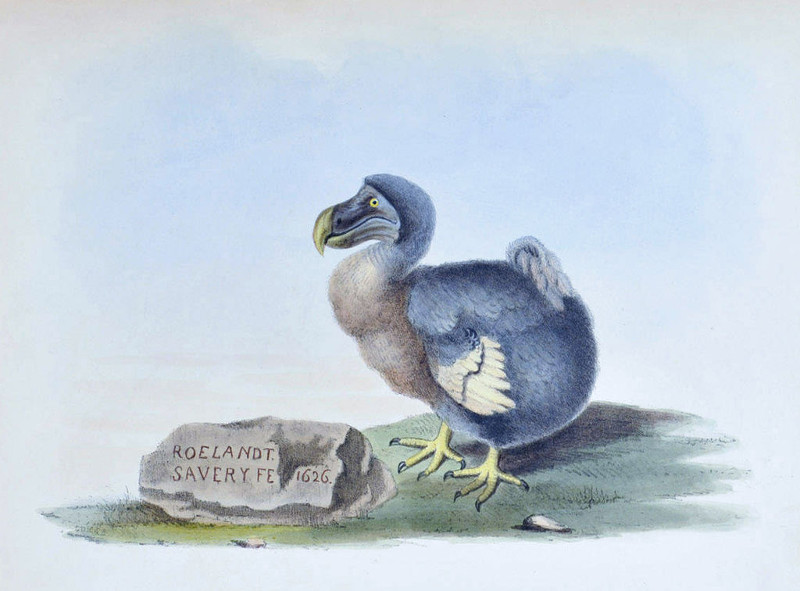
In 1626, Dutch artist Roelandt Savery composed this historic portrait of a dodo, one of the few painted from a live specimen. Unfortunately, he gave it two left feet.
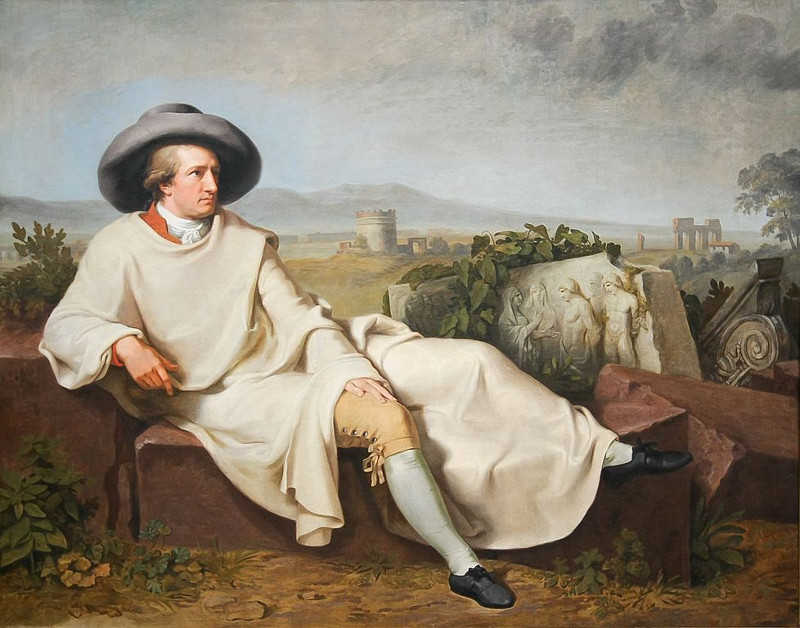
Likewise, in Johann Tischbein’s 1787 portrait of Goethe in the Roman Campagna, the poet’s right leg bears a left foot.
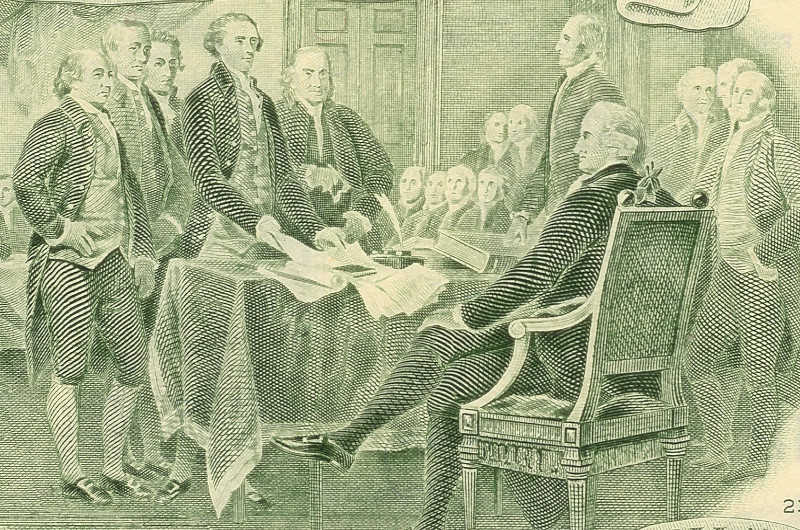
And what has happened to Thomas Jefferson’s left foot on the back of the $2 bill? “Unless Jefferson can bend his leg in the wrong direction at the knee, it is hard to see how this foot can be attached to his leg,” writes William Poundstone in Bigger Secrets. “If it’s someone else’s foot, he is standing in a more incredible position yet.”
The $2 bill engraving is based on John Trumbull’s painting The Declaration of Independence, below. But “The perspective is easier to judge in that painting, and the foot in question (definitely Jefferson’s) does not look so strange as on the bill.”
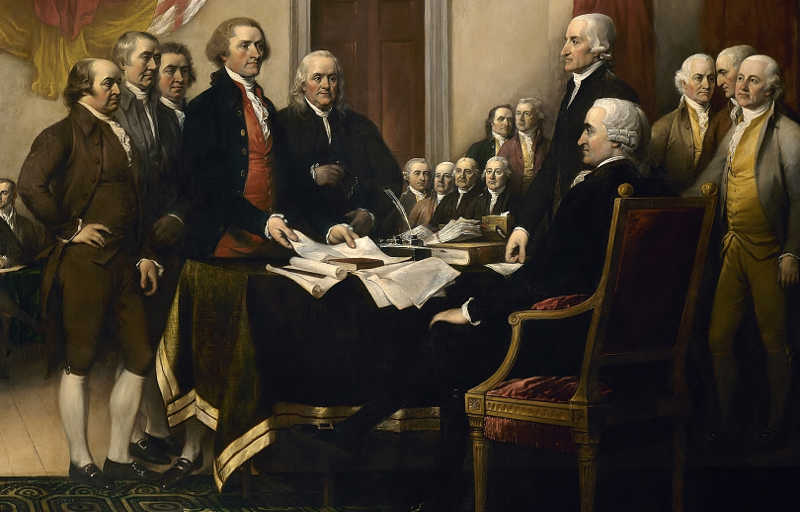
Match Point

In all 50 states, it’s legal for second cousins to marry. So can third cousins, fourth cousins, and cousins of any higher degree.
Alex and Zelda are third cousins but cannot marry. Why? If they were not related, they would be perfectly eligible.
In a Word
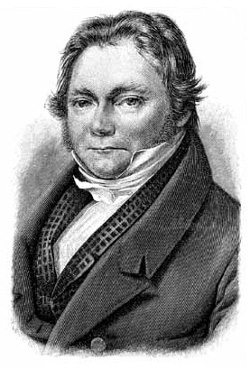
cacodoxy
n. wrong opinion or doctrine
agnition
n. a recognition, an acknowledgement
veriloquous
adj. speaking the truth
Chlorine was at first thought to be an oxide obtained from hydrochloric acid, then known as muriatic acid, and was hence called oxymuriatic acid.
In 1810 Sir Humphry Davy realized that it’s an element and proposed the name chlorine, meaning green-yellow. Swedish chemist Jacob Berzelius resisted this at first but revealed his change of heart unexpectedly one day, as overheard by his colleague Friedrich Wöhler:
One day Anna Sundström, who was cleaning a vessel at the tub, remarked that it smelt strongly of oxymuriatic acid. Wöhler’s earlier surprise sublimed into astonishment when he heard Berzelius correct her, in words that have since become historic: ‘Hark thou, Anna, thou mayest now speak no more of oxymuriatic acid; but must say chlorine: that is better.’
[Hör’ Anna, Du darfst nun nicht mehr sagen oxydirte Salzsäure, sondern musst sagen Chlor, das ist besser.]
In Humour and Humanism in Chemistry, John Read writes, “These words, issuing from the mouth of the great chemical lawgiver of the age, sealed the fate of oxymuriatic acid.”
Fresh Hell
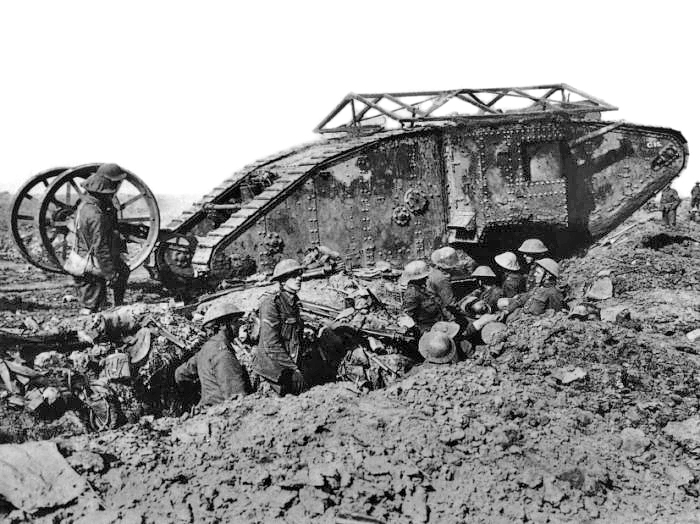
The Battle of the Somme saw the advent of a frightening new engine of war. “A man came running in from the left, shouting, ‘There is a crocodile crawling in our lines!'” recalled one German infantryman. “The poor wretch was off his head. He had seen a tank for the first time and had imagined this giant of a machine, rearing up and dipping down as it came, to be a monster. It presented a fantastic picture, this Colossus in the dawn light. One moment its front section would disappear into a crater, with the rear section still protruding, the next its yawning mouth would rear up out of the crater, to roll slowly forward with terrifying assurance.”
Interestingly, the first tanks came in two varieties, “male” and “female.” Males weighed a ton more and bore a cannon that the females lacked; early writers referred to “adventurous males,” “determined males,” “all-conquering females,” and “female man-killers.” Eventually the two merged into one standard design … called a hermaphrodite.
(From Peter Hart, The Great War, 2013. Thanks, Zach.)
Podcast Episode 119: Lost in the Taiga

In 1978 a team of geologists discovered a family of five living deep in the Siberian forest, 150 miles from the nearest village. Fearing persecution, they had lived entirely on their own since 1936, praying, tending a meager garden, and suffering through winter temperatures of 40 below zero. In this week’s episode of the Futility Closet podcast we’ll meet the Lykov family, whose religious beliefs committed them to “the greatest solitude on the earth.”
We’ll also learn about Esperanto’s role in a Spanish prison break and puzzle over a self-incriminating murderer.
Special Interests
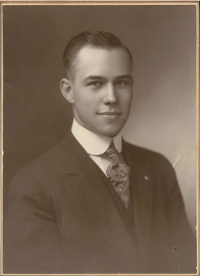
In the summer of 1920, as the states were considering whether to grant suffrage to women, Tennessee became a battleground. The 19th amendment would become law if 36 of the 48 states approved it, but only 35 had ratified the measure, and 8 had rejected it. Of the remaining states, only Tennessee was even close to holding the needed votes. When the state senate voted 25 to 4 in favor, suffrage leader Carrie Chapman Catt wrote, “We are one-half of one state away from victory.” The final decision would fall to the state house of representatives, where it appeared poised to fail by a single vote.
On the morning of the vote, the General Assembly’s youngest member, Republican Harry Burn, who had been counted as a certain opponent of the amendment, received a letter from his mother:
Dear Son:
Hurrah, and vote for suffrage! Don’t keep them in doubt. I noticed some of the speeches against. They were bitter. I have been watching to see how you stood, but have not noticed anything yet. Don’t forget to be a good boy and help Mrs. Catt put the ‘rat’ in ratification.
Your Mother
When his name was called, Burn said “aye” and the measure passed. The next day, he rose to explain his vote: “I want to take this opportunity to state that I changed my vote in favor of ratification because: 1) I believe in full suffrage as a right, 2) I believe we had a moral and legal right to ratify, 3) I know that a mother’s advice is always safest for her boy to follow, and my mother wanted me to vote for ratification.”
